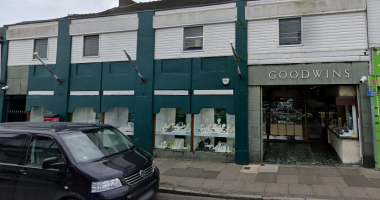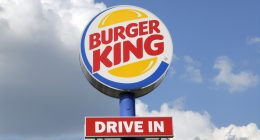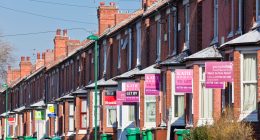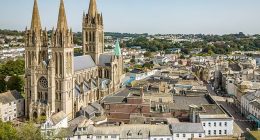THE rate of inflation in the UK reached 2.1% in May, stoking fears of an interest rate rise.
The Covid bounceback has driven prices higher with clothes, fuel and dining out leading the way.
Experts fear this unexpected bounce back could be a sign of the market overheating, forcing a squeeze on household finances.
They warn it could see the Bank of England raise the base rate much higher than planned, in turn causing lenders to hike interest rates on things like personal loans and mortgages.
Inflation is a measure of the cost of living. It looks at how much the price of goods has changed over time.
The average increase in prices is usually based on how much things cost today compared to a year ago and is known as the inflation rate.
Why does inflation matter?
INFLATION is a measure of the cost of living. It looks at how much the price of goods, such as food or televisions, and services, such as haircuts or train tickets, has changed over time.
Usually people measure inflation by comparing the cost of things today with how much they cost a year ago. The average increase in prices is known as the inflation rate.
The government sets an inflation target of 2%.
If inflation is too high or it moves around a lot, the Bank of England says it is hard for businesses to set the right prices and for people to plan their spending.
High inflation rates also means people are having to spend more, while savings are likely to be eroded as the cost of goods is more than the interest we’re earning.
Low inflation, on the other hand, means lower prices and a greater likelihood of interest rates on savings beating the inflation rate.
But if inflation is too low some people may put off spending because they expect prices to fall. And if everybody reduced their spending then companies could fail and people might lose their jobs.
See our UK inflation guide and our Is low inflation good? guide for more information.
The government sets an inflation target of 2% to keep the economy growing steadily.
The latest inflation figure of 2.1% is up from 1.5% last month, according to new data from the Office for National Statistics (ONS).
Inflation is now at its highest level since before the coronavirus pandemic and it’s the first time inflation has been above 2% since July 2019.
It’s slightly ahead of this target and it’s also ahead of predictions – experts had expected the rate to be 1.8% this month.
Jason Hollands, managing director of online investment service Bestinvest said: “A period of higher inflation will squeeze many households, especially those that have been impacted by reductions in income as a result of furlough, unemployment or pay cuts.
“In other cases, however, the excess savings accumulated during the pandemic as people have stayed at home will help offset a financial squeeze in the near term.”
Experts have voiced fears that rising inflation will put pressure on the Bank of England to raise interest rates.
The cost of clothing, fuel and meals and drinks out were the biggest contributors to this rise.
The cost of food and non-alcoholic drinks fell.
Grant Fitzner, chief economist at the ONS said: “The rate of inflation rose again in May and is now above 2% for the first time since the summer of 2019.
“This month’s rise was led by fuel prices, which fell this time last year but have jumped this year, thanks to rising crude prices.
“Clothing prices also added upward pressure as the amount of discounting fell in May.”
Drivers were hit by the biggest annual hike in fuel prices in a decade in May.
The average price of petrol in the UK shot up from 107p to 129p per litre since last May – a jump of 22p or 20%, data from the RAC Foundation shows.
It’s the biggest year-on-year increase since February 2016, when pump costs leapt up 18p per litre.
Meanwhile on the high street clothing an footwear prices went up by 2.3% between April and May, the ONS said.
In the same period last year when the country has just gone into the first coronavirus lockdown, prices increased by just 0.3%.
The difference signals that there are fewer discounts being offered by shops this year as they were allowed to reopen again from the latest lockdown.
The ONS said: “In May 2020, the proportion of discounting was relatively high during the first coronavirus lockdown when demand may have been reduced as a result of less browsing in stores, people spending more time at home where they might have been less interested in clothing, and a shift in spending patterns towards other necessities such as food and cleaning products.
“The upward effects this year came from a broad range of women’s, men’s and children’s clothing and footwear.”
The price of dining out increased as hospitality venues reopened again in April and May.
But the ONS noted a degree of caution on measuring this rise, since last year they were closed and prices were based on estimates.
The economy showed further signs of recovery since the pandemic hit, with the unemployment rate falling to 4.7% according to ONS data released yesterday.
Data released last week shows the economy grew by 2.3% in April when pubs, shops and restaurants could reopen after months of being in lockdown.
But the Prime Minister Boris Johnson yesterday pushed back the final stage of getting the country back on track after the pandemic.














